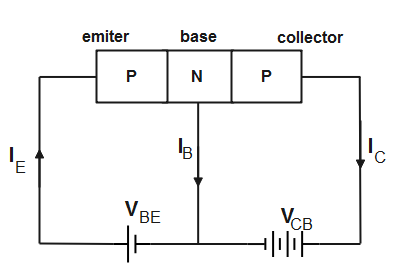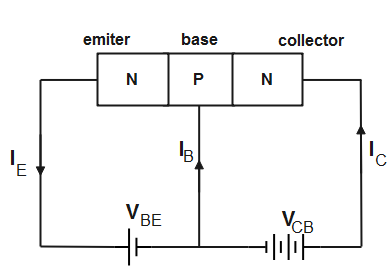
Are transistors semiconductors?
Answer
441k+ views
Hint: Semiconductors are devices which have conductivity less than metals but more than insulators. Their conductivity increases with increase in temperature. There are two types of semiconductors; p-type and n-type. Transistors are used as switches for electric signals and electric power and are also used as amplifiers. Transistors are made by combining three parts.
Complete answer:
Semiconductors are those elements which have electrical conductivity more than the insulators but less than conductors. There are two types of semiconductors; p-type and n-type semiconductors.
In p-type semiconductors, movement of holes conducts electricity while in n-type semiconductors movement of electrons conduct electricity.
Transistors are made by combining terminals; collector, base, emitter.
These terminals are combined together in a transistor to amplify electronic signals, act as a switch for electrical signals or electronic power.
The three terminals of the transistor are semiconductor and hence a transistor is also a semiconductor.
The different types of transistors are P-N-P transistor, where a n-type semiconductor is placed between two p-type semiconductor
N-P-N transistor -where a p-type semiconductor is placed between two n-type semiconductors.
Therefore, transistors are also semiconductor devices because they are made by combining three semiconductors.


Note: Transistors are the building blocks of all electronic devices. Out of the collector, base and emitter; the collector is the largest part and the base is the smallest part. P-type semiconductors are made by doping intrinsic semiconductors with elements which have shortage of electrons while the n-type semiconductors are made by doping intrinsic semiconductors with elements which have extra electrons.
Complete answer:
Semiconductors are those elements which have electrical conductivity more than the insulators but less than conductors. There are two types of semiconductors; p-type and n-type semiconductors.
In p-type semiconductors, movement of holes conducts electricity while in n-type semiconductors movement of electrons conduct electricity.
Transistors are made by combining terminals; collector, base, emitter.
These terminals are combined together in a transistor to amplify electronic signals, act as a switch for electrical signals or electronic power.
The three terminals of the transistor are semiconductor and hence a transistor is also a semiconductor.
The different types of transistors are P-N-P transistor, where a n-type semiconductor is placed between two p-type semiconductor
N-P-N transistor -where a p-type semiconductor is placed between two n-type semiconductors.
Therefore, transistors are also semiconductor devices because they are made by combining three semiconductors.


Note: Transistors are the building blocks of all electronic devices. Out of the collector, base and emitter; the collector is the largest part and the base is the smallest part. P-type semiconductors are made by doping intrinsic semiconductors with elements which have shortage of electrons while the n-type semiconductors are made by doping intrinsic semiconductors with elements which have extra electrons.
Latest Vedantu courses for you
Grade 9 | CBSE | SCHOOL | English
Vedantu 9 CBSE Pro Course - (2025-26)
School Full course for CBSE students
₹35,000 per year
Recently Updated Pages
Express the following as a fraction and simplify a class 7 maths CBSE

The length and width of a rectangle are in ratio of class 7 maths CBSE

The ratio of the income to the expenditure of a family class 7 maths CBSE

How do you write 025 million in scientific notatio class 7 maths CBSE

How do you convert 295 meters per second to kilometers class 7 maths CBSE

Write the following in Roman numerals 25819 class 7 maths CBSE

Trending doubts
Give 10 examples of unisexual and bisexual flowers

Draw a labelled sketch of the human eye class 12 physics CBSE

Differentiate between homogeneous and heterogeneous class 12 chemistry CBSE

Differentiate between insitu conservation and exsitu class 12 biology CBSE

What are the major means of transport Explain each class 12 social science CBSE

Franz thinks Will they make them sing in German even class 12 english CBSE




